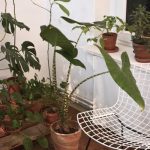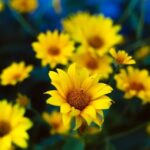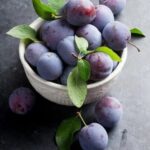Flower gardens can add a pop of color and natural beauty to any outdoor space. In this article, we will explore various ideas for flower gardens, from choosing the right flowers to creating a garden that provides year-round interest. Whether you have a green thumb or are just starting out, there’s something for everyone when it comes to creating a stunning flower garden.
When it comes to planning and designing a flower garden, there are endless possibilities. From cottage gardens to formal gardens and wildflower gardens, each type offers its own unique charm and aesthetic appeal. But before diving into design ideas, it’s important to first understand the importance of flower gardens and their impact on the overall aesthetic of a home or outdoor space.
In addition to being visually appealing, flower gardens also play a crucial role in attracting wildlife such as pollinators and birds. By carefully selecting flowers that bloom at different times of the year, you can create a garden that provides essential food sources for animals while also creating an ever-changing landscape of colors and scents.
So whether you’re looking to create a serene retreat or a buzzing ecosystem in your backyard, this article will provide you with everything you need to know about creating the perfect flower garden.
Types of Flower Gardens
When it comes to creating a beautiful and vibrant flower garden, there are numerous types to consider. Each type of flower garden has its own unique characteristics and design elements, making it essential to select the right one based on personal preferences, available space, and desired aesthetic. Here are some popular types of flower gardens to consider:
- Cottage Gardens: Cottage gardens are known for their charming, informal style and mix of colorful flowers, often including roses, daisies, and lavender. They typically feature a variety of heights and textures, along with traditional elements such as picket fences and climbing vines.
- Formal Gardens: In contrast to cottage gardens, formal gardens are characterized by symmetrical designs, structured layouts, and meticulously maintained plants. These gardens often include straight lines, geometric shapes, and manicured hedges for a more elegant and orderly appearance.
- Wildflower Gardens: Wildflower gardens embrace a more naturalistic approach by incorporating native plants that can thrive without much maintenance. They create a more relaxed and effortless look while also providing valuable habitat for local wildlife.
When choosing the type of flower garden to cultivate in your outdoor space, it’s essential to consider factors such as personal style preference, available time for maintenance, and the overall aesthetic of your home or landscape. By selecting the right type of flower garden based on these considerations, you can create an outdoor oasis that brings beauty and joy throughout the seasons.
Additionally, don’t be afraid to combine elements from different types of flower gardens to create a hybrid style that suits your taste. For example, you might incorporate the free-flowing charm of a wildflower garden into the organized structure of a formal garden for a unique and personalized look. The key is to experiment with various ideas for flower gardens until you find the perfect combination that reflects your individuality while enhancing the visual appeal of your outdoor space.
Choosing the Right Flowers
When it comes to creating a beautiful and thriving flower garden, choosing the right flowers is crucial. One of the first considerations should be selecting flowers that are well-suited for the specific climate and soil type of the garden location. For example, if the area experiences hot and dry summers, drought-tolerant plants such as lavender, yarrow, or Russian sage would be great choices.
On the other hand, shady spots may require plants like hostas, ferns, or impatiens that thrive in low light conditions. Understanding the environmental needs of different flowers will ensure their success in the garden.
Another important aspect of selecting flowers for a garden is considering how they complement each other in terms of color, height, and blooming season. When choosing a color palette for the flower garden, it’s helpful to consider complementary colors to create visual harmony. Mixing contrasting colors can also make an eye-catching display.
Additionally, varying plant heights adds dimension to the garden and creates visual interest. Finally, selecting a mix of flowers with different blooming seasons ensures that there is always something in bloom throughout the gardening season.
In addition to considering climate and aesthetics when choosing flowers for a garden, it’s important to think about practicalities such as maintenance requirements. While some plants may be stunningly beautiful, their high maintenance needs might not be ideal for every gardener. Selecting flowers that align with one’s available time and willingness for care is essential for successfully maintaining a flower garden.
| Flower Choices | Considerations |
|---|---|
| Drought-tolerant plants (lavender, yarrow) | Well-suited for hot and dry climates |
| Shade-loving plants (hostas, ferns) | Ideal for areas with low light conditions |
| Contrasting or complementary colors | Create visual harmony in the garden |
| Varying plant heights | Add dimension and visual interest to the garden |
Designing a Flower Garden
Designing a beautiful flower garden involves careful planning and consideration of various elements to create an aesthetically pleasing and harmonious space. One important aspect to consider when designing a flower garden is the layout. The layout of the garden will determine how the space is utilized and how the flowers are arranged. Some popular layouts include formal gardens with symmetrical designs, informal gardens with curved or flowing patterns, and geometric designs that incorporate shapes and patterns.
In addition to the layout, focal points play a crucial role in the design of a flower garden. Focal points can be created using eye-catching flowers, sculptures, water features, or architectural elements such as trellises or arbors. These focal points draw the eye and add visual interest to the garden, creating a sense of balance and harmony.
Another essential element in designing a flower garden is incorporating hardscaping elements such as paths or borders. Paths not only provide access to different areas of the garden but also contribute to the overall design aesthetic. They can be made of various materials such as gravel, stone pavers, or brick, each offering its own unique look and feel.
Borders can delineate different sections of the garden and add structure to the overall design. They can be made from low walls, hedges, or plantings that define specific areas within the garden.
When considering these elements for your own flower garden design, it is important to keep in mind your personal preferences as well as practical considerations such as maintenance and climate suitability for certain plants.
| Flower Garden Design Element | Description |
|---|---|
| Layout | Determines how space will be utilized and how flowers are arranged |
| Focal Points | Create visual interest and add harmony to the garden |
| Hardscaping Elements (paths/borders) | Add structure & aesthetic value; providing access around the garden & delineating different sections |
Maintenance and Care
When it comes to maintaining a healthy and beautiful flower garden, there are several essential tasks that every gardener should keep in mind. Proper maintenance and care are crucial for the overall health and longevity of your flowers. Here are some key tasks to consider:
1. Watering: One of the most important aspects of flower garden maintenance is ensuring that your plants receive adequate water. Different types of flowers have varying water needs, so it’s important to research the specific requirements of the flowers in your garden. Some may require daily watering, while others may only need to be watered once a week. Consider investing in a soaker hose or drip irrigation system to provide consistent and efficient watering.
2. Weeding: Regular weeding is crucial for maintaining a neat and healthy flower garden. Weeds compete with your flowers for water, sunlight, and nutrients, so it’s important to stay on top of weed control. Consider using mulch to suppress weed growth and make the task of weeding more manageable.
3. Pruning: Proper pruning not only helps maintain the shape and size of your plants but also promotes healthy growth and flowering. Deadheading spent blooms, removing damaged or diseased growth, and shaping overgrown plants are all essential aspects of pruning for a flourishing flower garden.
4. Fertilizing: Providing your flowers with the right nutrients is key to their overall health and vitality. Depending on the type of flowers you have, you may need to use different types of fertilizers at various times throughout the growing season. Conduct soil tests to determine any specific deficiencies that need to be addressed with fertilization.
By staying on top of these essential maintenance tasks, you can ensure that your flower garden remains vibrant and beautiful throughout the growing season.
Attracting Wildlife
Benefits of Attracting Wildlife
One of the many benefits of flower gardens is their ability to attract wildlife, such as pollinators, birds, and other beneficial creatures. By providing a source of nectar, pollen, and shelter, flower gardens play a crucial role in supporting local ecosystems.
Pollinators like bees and butterflies are essential for plant reproduction, while birds help control pest populations and add a delightful soundtrack to the garden. Additionally, attracting wildlife can enhance the overall beauty of a garden by adding movement and life to the landscape.
Flower Selection for Wildlife
When aiming to attract pollinators and birds to a flower garden, it’s important to choose the right flowers. Opt for species that are native to your region, as they are better adapted to local conditions and have evolved alongside native wildlife.
Brightly colored flowers with open or tubular shapes are particularly attractive to pollinators, while berry-producing shrubs or trees can entice birds. Consider planting a variety of flowers that bloom throughout the seasons to provide food sources for wildlife year-round.
Garden Design for Wildlife
In addition to flower selection, garden design plays a role in attracting wildlife. Incorporating features like bird baths, insect hotels, or brush piles can provide additional habitat for creatures visiting the garden. Creating layered planting beds with varying heights and textures can offer shelter for small animals and create an inviting environment for birds.
Furthermore, leaving some areas of the garden slightly untamed can provide nesting sites and hiding spots for wildlife. By carefully selecting plants and designing the landscape with wildlife in mind, flower gardens can become thriving ecosystems in their own right.
Seasonal Interest
When planting a flower garden, it’s important to consider how the garden will look throughout the year. By strategically choosing plants that bloom at different times and incorporating evergreen species, you can create a garden that provides visual interest in every season.
Strategic Plant Choices
To ensure year-round interest in your flower garden, it’s essential to select plants with varying blooming periods. For example, early spring bulbs like daffodils and tulips can be complemented by summer-blooming perennials such as coneflowers and black-eyed Susans. Additionally, including fall-flowering plants like asters and chrysanthemums will extend the garden’s seasonal appeal. Evergreen shrubs and ornamental grasses are also excellent choices for maintaining visual interest during the winter months.
Seasonal Blooming Patterns
In addition to choosing a diverse range of plants that bloom at different times, consider creating specific planting patterns to maximize seasonal interest. For example, grouping together early spring bloomers near the front of the garden, followed by mid-season flowers in the middle, and late-blooming varieties towards the back can create a dynamic display that unfolds over time. Mixing in plants with interesting foliage or unique textures can also add visual appeal during non-blooming periods.
Creating Year-Round Beauty
By carefully selecting a combination of flowering and non-flowering plants with staggered blooming times, you can ensure that your flower garden remains visually appealing throughout the year. Consider incorporating elements like ornamental trees for spring blossoms or autumn color, and flowering vines for vertical interest. With thoughtful planning and strategic plant choices, it is possible to create a flower garden that provides beauty and interest no matter what time of year.
Inspirational Examples
In conclusion, the beauty and impact of flower gardens on a home or outdoor space cannot be overstated. The variety of types such as cottage gardens, formal gardens, and wildflower gardens, provide endless possibilities for creating a unique and personalized garden that reflects individual tastes and preferences.
When choosing the right flowers, it is important to consider the climate and soil type of the location, as well as how the colors, heights, and blooming seasons of different flowers will complement each other.
Designing a flower garden requires careful planning and consideration for layout, focal points, and incorporating hardscaping elements such as paths or borders. Furthermore, maintenance and care are essential for keeping a flower garden healthy and beautiful, which includes tasks such as watering, weeding, pruning and fertilizing. Attracting wildlife to the garden not only adds to its charm but also benefits the overall ecosystem by encouraging pollinators and other beneficial wildlife to thrive.
Finally, through examples of real-life stunning flower gardens along with practical ideas showcased in this article provides readers with both visual inspiration and actionable steps to apply these concepts into their own garden designs. By incorporating these ideas for flower gardens into their own spaces, individuals can create a beautiful outdoor oasis that brings joy throughout every season.
Frequently Asked Questions
How Do I Make My Flower Garden Look Nice?
Making your flower garden look nice involves careful planning and maintenance. Start by choosing a variety of flowers that bloom at different times to ensure year-round color. Consider the height, color, and texture of the plants to create visual interest. Regular watering, weeding, and deadheading will also keep your garden looking its best.
How Do You Plan a Flower Bed Layout?
Planning a flower bed layout involves considering the size and shape of the space, the available sunlight, and the types of flowers you want to plant. It’s important to group plants with similar water and sunlight needs together and consider their mature size to avoid overcrowding. Creating a focal point in the bed can also add visual appeal.
What Is the Best Thing to Put in Flower Beds?
The best things to put in flower beds are a combination of flowering plants, foliage plants, and ground covers. Flowering plants like roses, lilies, or daisies provide color and visual interest. Foliage plants like hostas or ornamental grasses add texture and contrast. Ground covers like creeping phlox or vinca help suppress weeds while adding a lush carpet of greenery.

Welcome to my gardening blog! I am passionate about plants and enjoy sharing my knowledge and experiences with others. In this blog, I will write about everything related to gardening, from tips on how to get started to updates on my own garden projects.





